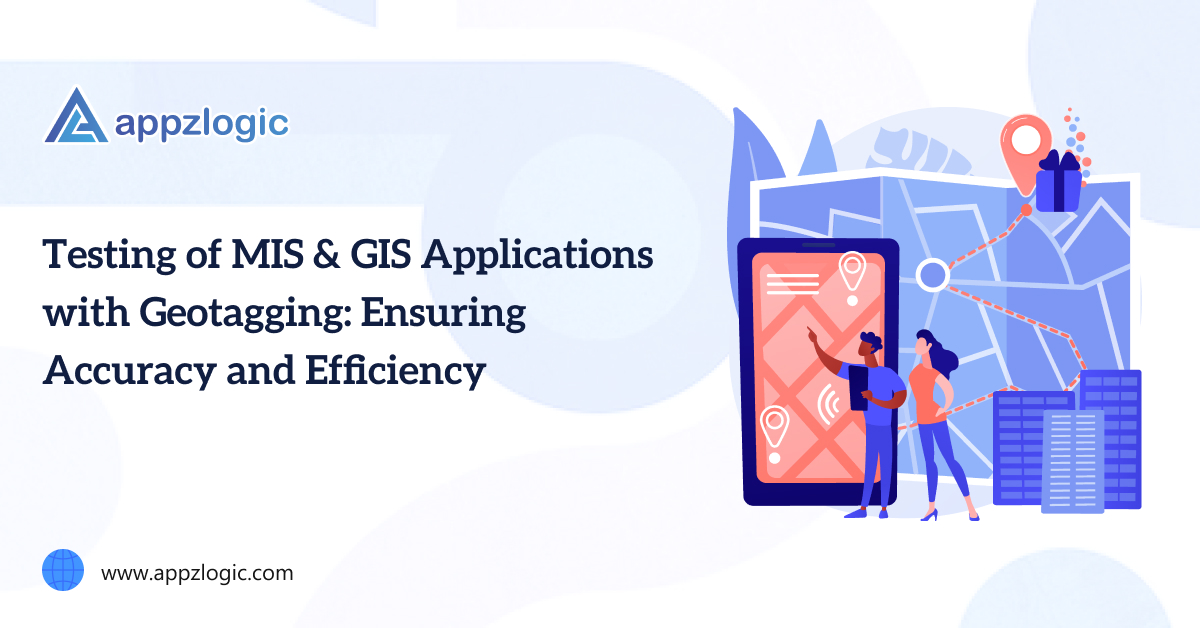Introduction:
In today’s data-driven world, Management Information Systems (MIS) and Geographic Information Systems (GIS) play a crucial role in various sectors, including urban planning, disaster management, logistics, and more. These applications are often enriched with geotagging capabilities to provide location-based data. However, the reliability and accuracy of geotagged information are paramount. This web blog explores the significance of testing MIS & GIS applications with geotagging and the best practices to ensure accurate and efficient results.
Understanding Geotagging:
Geotagging is the process of adding geographical information, such as latitude, longitude, and altitude, to various forms of media, including photos, videos, and textual data.
In the context of MIS and GIS applications, geotagging involves associating location data with information and visualizations, making it a valuable feature for decision-makers.
The Need for Testing MIS & GIS Applications with Geotagging:
- Data Accuracy: Accurate location data is crucial for making informed decisions. Inaccurate geotagging can lead to incorrect conclusions, especially in sectors like emergency response and environmental monitoring.
- User Experience: Misleading or incorrect geotagged data can lead to a poor user experience. End-users expect accurate results and depend on reliable geospatial information.
- Legal Compliance: In certain industries, like healthcare or public safety, compliance with geospatial data accuracy standards is mandatory. Failure to meet these standards can lead to legal consequences.
Best Practices for Testing MIS & GIS Applications with Geotagging:
Data Validation:
- Validate Coordinates: Ensure that latitude and longitude coordinates are within the expected range. Out-of-range values should be flagged for further investigation.
- Check Altitude: If applicable, verify that altitude data is within acceptable parameters.
- Data Consistency: Ensure that geotagged data is consistent with other attributes and does not conflict with other information within the application.
Precision Testing:
- Coordinate Precision: Test the precision of the geotagged coordinates. Different applications may require varying levels of precision, so ensure it aligns with the project’s specific needs.
- Accuracy Assessment: Measure the accuracy of geotagged data by comparing it to ground-truth data or established benchmarks.
Performance Testing:
- Speed and Responsiveness: Evaluate the application’s response time when handling geotagged data, especially in scenarios with high user traffic or data input.
- Load Testing: Test the application’s performance under heavy loads to ensure it can efficiently handle a large number of geotagged data points.
Integration Testing:
- Compatibility: Verify the compatibility of geotagged data with other systems, databases, and devices. Ensure that data can be smoothly integrated into the application’s ecosystem.
- API Testing: If the application relies on external APIs for geotagging, ensure that these APIs function as expected.
Usability and User Experience:
- Interface Testing: Evaluate the user interface for geotagged data, ensuring that it is user-friendly and provides meaningful insights.
- Error Handling: Test the application’s ability to handle errors gracefully, especially when geotagging fails or produces inconsistent results.
Security Testing:
- Data Protection: Ensure that geotagged data is encrypted and protected to prevent unauthorized access or breaches.
- Secure Geotagging: Verify that the application uses secure protocols and practices when collecting and storing geotagged data.
Compliance Testing:
- Regulatory Compliance: Ensure the application adheres to industry-specific geospatial data accuracy standards and legal requirements.
- Accessibility: Verify that geotagged information is accessible to all users, including those with disabilities.
Mobile Testing:
- Mobile Compatibility: Test geo tagging features on various mobile devices and platforms, ensuring seamless functionality.
- Battery and Resource Usage: Evaluate the application’s impact on the device’s resources, especially the battery, when geotagging is active.
Conclusion:
Testing MIS & GIS applications with geotagging is an essential part of ensuring data accuracy and user satisfaction. Inaccurate or inconsistent geotagged data can have significant consequences, making rigorous testing procedures a necessity. By following best practices for data validation, precision testing, performance testing, integration testing, usability assessment, security evaluation, compliance checks, and mobile testing, developers can create robust and reliable geotagging capabilities within these applications.
The successful testing of geotagged data not only guarantees accuracy and efficiency but also empowers organizations and individuals to make data-driven decisions that impact critical areas such as urban planning, disaster management, logistics, and more. Ultimately, the combination of MIS, GIS, and geotagging can revolutionize how we collect, analyze, and utilize location-based information, providing a significant advantage to those who prioritize the quality and reliability of geospatial data.




